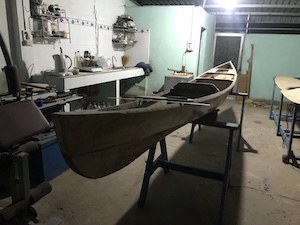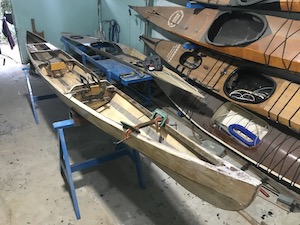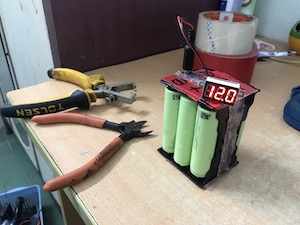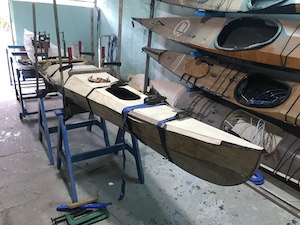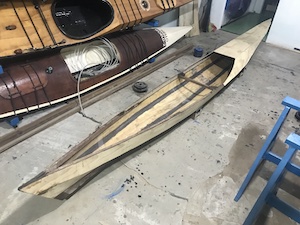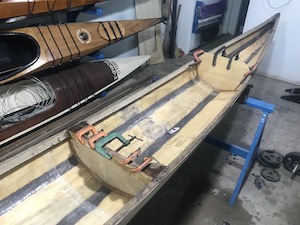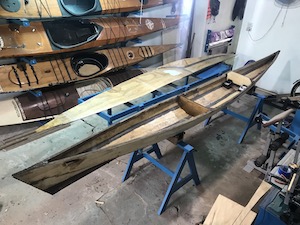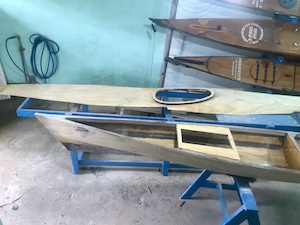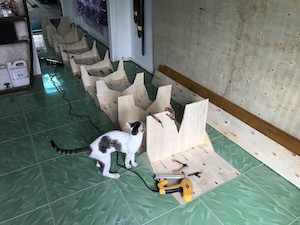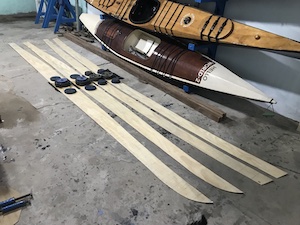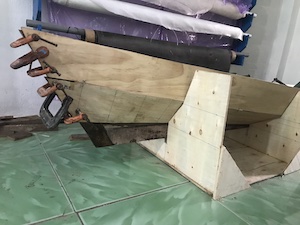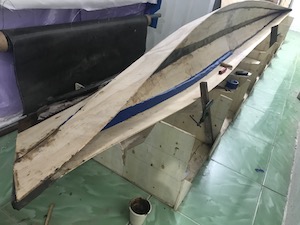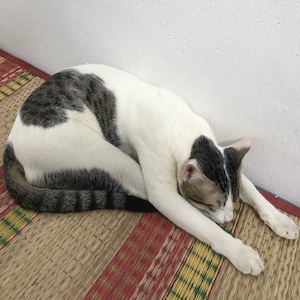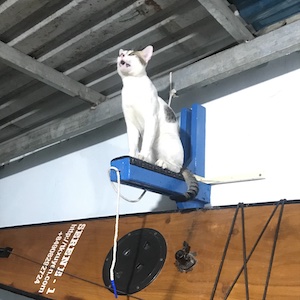 Nhân chuyện ChatGPT và các thể loại AI xôn xao dư luận gần đây. Có nhiều cách nhận định khác nhau, đương nhiên không nên đánh giá thấp vai trò của trí tuệ nhân tạo và ứng dụng của nó, nhưng bảo máy móc có trí tuệ thì chắc chắn là không! Nói ngắn gọn thế này: sáng tạo là đặc quyền của con người (hay đúng hơn là của một số người), là khả năng đi vào những vùng chưa biết, những lỗ đen kiến thức, khai phá, lập thuyết, chứng minh, etc… Chừng nào mà AI nó chứng minh được Bổ đề cơ bản, ví dụ như thế, thì tôi mới tin là máy có trí tuệ. Còn lại, máy nó chỉ lặp lại những kiến thức thu thập được, càng ngày càng nhiều, dùng khả năng siêu tốc độ của mình để xử lý, tối ưu, và trình bày ra dưới một dạng khôn khéo mà thôi! Mấy ông già “biết tuốt” VN chắc khoái con ChatGPT này lắm, cái gì cũng biết…
Nhân chuyện ChatGPT và các thể loại AI xôn xao dư luận gần đây. Có nhiều cách nhận định khác nhau, đương nhiên không nên đánh giá thấp vai trò của trí tuệ nhân tạo và ứng dụng của nó, nhưng bảo máy móc có trí tuệ thì chắc chắn là không! Nói ngắn gọn thế này: sáng tạo là đặc quyền của con người (hay đúng hơn là của một số người), là khả năng đi vào những vùng chưa biết, những lỗ đen kiến thức, khai phá, lập thuyết, chứng minh, etc… Chừng nào mà AI nó chứng minh được Bổ đề cơ bản, ví dụ như thế, thì tôi mới tin là máy có trí tuệ. Còn lại, máy nó chỉ lặp lại những kiến thức thu thập được, càng ngày càng nhiều, dùng khả năng siêu tốc độ của mình để xử lý, tối ưu, và trình bày ra dưới một dạng khôn khéo mà thôi! Mấy ông già “biết tuốt” VN chắc khoái con ChatGPT này lắm, cái gì cũng biết…
Có người đưa các ví dụ AI có thể tối ưu hoá những đoạn code, rồi vẽ ra viễn cảnh máy có thể code được! Chuyện này theo tôi vẫn còn xa, xa lắm! Máy nó chỉ lặp lại một số “bài” được học thôi, vì học quá nhiều nên đôi khi còn có vẻ “giỏi” hơn cả coder – con người! Và thực ra cũng có một số coder giống như thế (giống máy): rất giỏi logic, test IQ, giỏi xử lý các “câu đố” được đưa ra, nhưng kỳ lạ thay, không code được, hoặc code nhưng không giỏi, tại sao thế? Tại vì cái anh chàng “thông minh” đó thực ra chỉ “thuộc bài”, phỏng vấn các vòng đều rất ấn tượng, và cũng đôi khi là “thông minh” thật, giỏi “làm tính, giỏi logic”! Nhưng code, hiểu theo nghĩa rộng, là đi giải một bài toán thực tế, mà giải quyết vấn đề thực tế thì đôi khi “thông minh” chưa đủ, như trên đã nói, “phát minh, sáng tạo” là đặc quyền của con người.
Việc lặp lại “như vẹt” một số kiến thức đã biết chỉ tạo ra được sự “thông minh”, hay “có vẻ thông minh”, chứ không tạo ra được “phát minh, sáng kiến”, không tìm ra hướng đi mới, cách tiếp cận đúng, tìm ra giải pháp hữu ích giữa những cái “hỗn mang, vô tri, bất định”. Cuộc đời của mỗi con người đều giống như “Miếng da lừa” (tiểu thuyết của Honoré de Balzac), có bao nhiêu sinh lực dành để nhớ những kiến thức không thực sự cần thiết, những thông tin vụn vặt cốt chỉ để “loè người” hay để theo đuổi những mục đích “bất chính, bất thiện” thì đương nhiên không còn năng lực để theo đuổi những tri thức hữu ích đích thực. Thông tin thì càng ngày càng nhiều, “Hằng hà sa số” như thế, làm sao mà nhớ hết nổi?! Chuyện học “nhồi nhét kiến thức” đã nói rồi, chuyện “trọc phú tri thức” cũng bàn rồi…
Nhưng tiếc thay, lại sa đà vào mớ trừu tượng “kiến thức nguyên bản” một cách vô bổ, không đưa ra được kết luận gì hữu ích. Nhưng không ai nói cho rõ “kiến thức thật sự, kiến thức có thể sáng tạo” nó là như thế nào, bắt nguồn từ đâu, làm sao để có. Tôi cũng không hiểu lắm, nhưng cho rằng nó liên quan mật thiết đến cảm hứng sống, đến động cơ, mục đích của con người, đến sự can đảm đối diện với bản thân, và có lẽ là, từ trong sâu thẳm, liên quan đến bản chất “hướng thiện” của mỗi người! Trở lại chuyện ứng dụng ChatGPT, chuyện chẳng có gì to tát, các bác cứ làm quá lên! Chỉ là một cỗ máy thuộc bài, lặp lại như vẹt mà thôi! Nói cho đúng là một phần lớn báo chí và cư dân MXH VN về dân trí cũng cỡ đó, như cái thùng rỗng vọng lại những thứ người ta dội vào, viết tiếng Việt thì trúc trắc đọc không được…
Dịch tiếng Anh thì ngô nghê, tối nghĩa, trình ngôn ngữ e là chưa bằng máy! Và chính vì dân trí đang là như thế… nên ChatGPT rồi cũng là công cụ như Wikipedia mà thôi, ý tôi tức là một công cụ… nô dịch tư tưởng! Ví như đám lưu manh trên mạng, mỗi lần có tranh cãi gì là chăm chăm đi sửa Wiki theo hướng có lợi cho mình! Không thể phủ nhận Wiki cũng là nguồn thông tin hữu ích, nhưng nó cũng chỉ là “cái chợ” của con người, có đủ thứ “thượng vàng hạ cám” ở trên đó. ChatGPT rồi cũng sẽ được dùng như một công cụ “nô dịch tư tưởng”, dùng cho những loại óc “bã đậu”, chuyển giao “thông tin” dưới dạng “mì ăn liền”, cái “thông tin” đó được nguỵ trang là “kiến thức”, “tri thức”, là “chân lý”. Nếu có sợ là sợ cho những thành phần dân trí quá thấp, nói gì cũng nghe, chứ ai lại đi sợ cái máy!?
Ai cũng biết, sự học thuộc lòng (dù nhồi nhét) chính là điểm khởi đầu của giáo dục, trẻ con đâu có biết gì nên cứ phải ép nó học thuộc một số “nguyên liệu thô” ban đầu, kiểu như: Nhân chi sơ, tính bản thiện, tính tương cận…
ChatGPT, tôi xem như đứa trẻ 3, 4 tuổi, bắt đầu bi bô những kiến thức đầu tiên. Và kệ mịa nó nói gì, lớn lên rồi thì nhiều người sẽ dễ dàng đồng ý là: Nhân chi sơ, tính bản ác
! Trở lại với ChatGPT, tôi vẫn xem nó là “con vẹt” học tiếng người, thấy con chuột đến giả tiếng mèo để đuổi chuột đi, thấy con mèo tới giả tiếng người nạt nộ để đuổi mèo đi. Nếu là vẹt thì người ta kêu là nó thông minh, nhưng nếu là người, mà suốt ngày lặp lại mãi một số ngôn từ vay mượn, máy móc, vô nghĩa, chả có tí nội hàm, nội tâm nào, cứ mãi “giả tiếng”… thì người ta kêu bằng: “thiểu năng trí tuệ”.

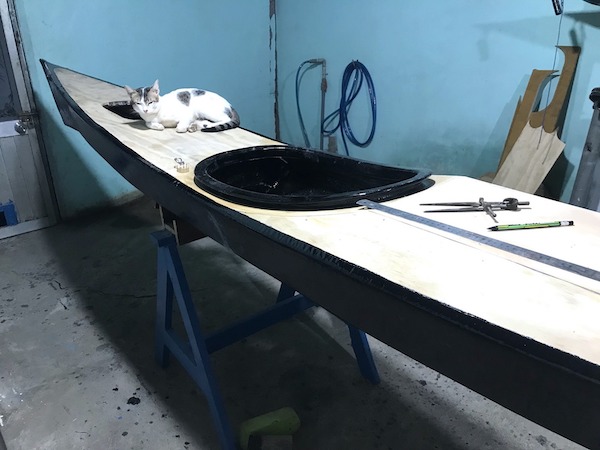
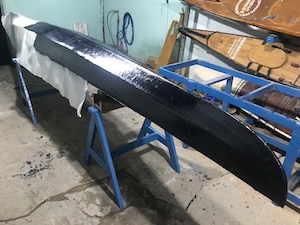
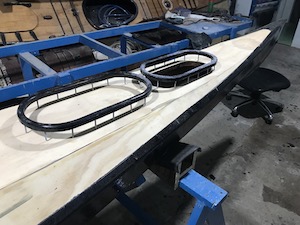
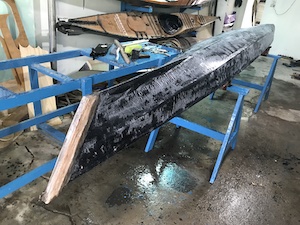
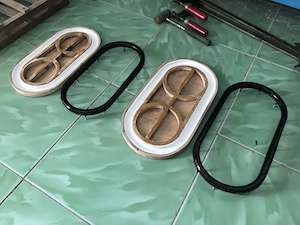
 Nhân chuyện ChatGPT và các thể loại AI xôn xao dư luận gần đây. Có nhiều cách nhận định khác nhau, đương nhiên không nên đánh giá thấp vai trò của trí tuệ nhân tạo và ứng dụng của nó, nhưng bảo máy móc có trí tuệ thì chắc chắn là không! Nói ngắn gọn thế này: sáng tạo là đặc quyền của con người (hay đúng hơn là của một số người), là khả năng đi vào những vùng chưa biết, những lỗ đen kiến thức, khai phá, lập thuyết, chứng minh, etc… Chừng nào mà AI nó chứng minh được Bổ đề cơ bản, ví dụ như thế, thì tôi mới tin là máy có trí tuệ. Còn lại, máy nó chỉ lặp lại những kiến thức thu thập được, càng ngày càng nhiều, dùng khả năng siêu tốc độ của mình để xử lý, tối ưu, và trình bày ra dưới một dạng khôn khéo mà thôi! Mấy ông già “biết tuốt” VN chắc khoái con ChatGPT này lắm, cái gì cũng biết…
Nhân chuyện ChatGPT và các thể loại AI xôn xao dư luận gần đây. Có nhiều cách nhận định khác nhau, đương nhiên không nên đánh giá thấp vai trò của trí tuệ nhân tạo và ứng dụng của nó, nhưng bảo máy móc có trí tuệ thì chắc chắn là không! Nói ngắn gọn thế này: sáng tạo là đặc quyền của con người (hay đúng hơn là của một số người), là khả năng đi vào những vùng chưa biết, những lỗ đen kiến thức, khai phá, lập thuyết, chứng minh, etc… Chừng nào mà AI nó chứng minh được Bổ đề cơ bản, ví dụ như thế, thì tôi mới tin là máy có trí tuệ. Còn lại, máy nó chỉ lặp lại những kiến thức thu thập được, càng ngày càng nhiều, dùng khả năng siêu tốc độ của mình để xử lý, tối ưu, và trình bày ra dưới một dạng khôn khéo mà thôi! Mấy ông già “biết tuốt” VN chắc khoái con ChatGPT này lắm, cái gì cũng biết…